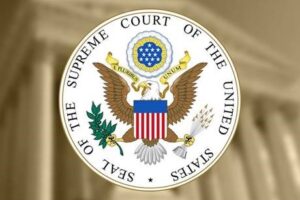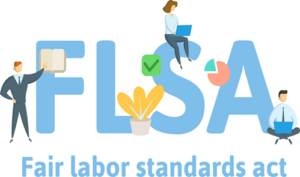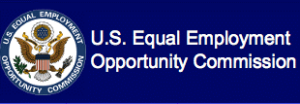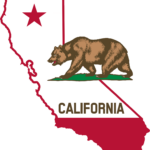 By Gerald L. Maatman, Jr. and Rebecca S. Bjork
By Gerald L. Maatman, Jr. and Rebecca S. Bjork
Duane Morris Takeaways: On June 29, 2023, the U.S. Supreme Court ruled that colleges and universities may not consider the race of applicants when making admissions decisions. In Students for Fair Admissions, Inc. v. President and Fellows of Harvard College, No. 20-1199 (U.S. June 29, 2023), Chief Justice Roberts wrote the majority opinion in a 6-3 ruling joined by Justices Thomas, Alito, Gorsuch, Kavanaugh and Barrett. The Supreme Court held that affirmative action programs at Harvard and the University of North Carolina-Chapel Hill violated the Equal Protection Clause of the Fourteenth Amendment to the U.S. Constitution. The decision, which is 237 pages in length, including concurring and dissenting opinions, opens the door for legal challenges to be brought to employers’ diversity, equity and inclusion efforts because the Supreme Court’s reasoning – that race-conscious admissions policies may constitute unconstitutional differential treatment of individuals based on race – arguably applies to hiring and promotion decisions made within business organizations.
Case Background
The lawsuit that led to the Harvard decision was filed in the U.S. District Court for the District of Massachusetts by Students for Fair Admissions, Inc. (SFAA), a legal organization created to bring federal court challenges to affirmative action in college and university admissions. In 2014, SFAA sued both Harvard and UNC in separate lawsuits, arguing that their race-conscious admissions policies violated Title VII of the Civil Rights Act and the Fourteenth Amendment’s Equal Protection Clause. Id. at 6. The First Circuit had affirmed a trial judgment in Harvard’s favor, while the Fourth Circuit was considering an appeal of the UNC case when the Supreme Court granted certiorari in the Harvard case and brought the UNC case into its writ to be decided alongside it.
The Supreme Court’s Decision
After determining that SFAA had standing to bring its lawsuits, the majority turned to analyzing the merits. It focused on the Fourteenth Amendment in light of prior decisions relating to education, beginning with the holding in Brown v. Board of Education that “racial discrimination in public education is unconstitutional.” Id. at 13. After reviewing decades of case law following in the footsteps of Brown, the majority concluded that “[e]liminating racial discrimination means eliminating all of it.” Id. at 15. The majority discussed the application of the strict scrutiny test that courts apply to determine whether an exception can be made to the constitutional requirement of equal protection and analyzed how prior decisions regarding affirmative action considered the facts at hand in applying that test. Citing Regents of the University of California v. Bakke, 438 U.S. 265 (1978), Grutter v. Bollinger, 539 U.S. 306 (2003), and Fisher v. University of Texas at Austin, 570 U.S. 297 (2013) – the latter of which was also brought by the founder of SFAA – the majority examined these prior rulings in detail. The majority asserted that in Fisher, the Supreme Court made it clear that while colleges and universities could consider race in admissions decisions, the process must have “a termination point,” “have reasonable durational limits,” “must have ‘sunset provisions’” and “must have a logical end point.” Id. at 21.
The majority concluded that the end point has now been reached, deciding that both Harvard’s and UNC’s admissions policies that took race into consideration were unconstitutional because the operations of those programs do not create outcomes that are “sufficiently measurable to permit judicial [review].” Id. at 22. For example, Harvard’s stated purposes for using race-conscious admissions processes included “training future leaders in the public and private sectors,” “preparing graduates to adapt to an increasingly pluralistic society,” “better educating its students through diversity,” and “producing new knowledge stemming from diverse outlooks.” Id. at 23. The majority held that those objectives “are not sufficiently coherent for purposes of strict scrutiny.” Id.
Independently, the majority held that the programs violated equal protection principles based on statistics showing that Harvard’s consideration of race in admissions led to an 11/1% decline in the number of Asian-Americans admitted to the prestigious college. Id. at 27. This led the majority to conclude that an individual’s race is, by effect, a negative factor in the admissions process, which violates the rules set forth in the earlier affirmative action cases in higher education discussed in the ruling. Id.
Finally, the majority expressed a caveat to its ruling forbidding the use of race-conscious processes in admissions. It wrote that “nothing in this opinion should be construed as prohibiting universities from considering an applicant’s discussion of how race affected his or her life, be it through discrimination, inspiration, or otherwise.” Id. at 39. Time will tell whether this creates a loophole in the majority’s decision, but it clearly will encourage further litigation in the future in this area of the law, as college admissions officials grapple with how to consider and weigh the impact of such admissions essays submitted by prospective students.
As expected, the dissenting Justices Sotomayor and Jackson wrote impassioned dissents, and Justice Sotomayor read hers from the bench, in terms of signaling its importance. They maintained that the Fourteenth Amendment itself is not race-neutral; it was drafted at the end of the Civil War precisely to provide race-based relief to former enslaved persons seeking to enter civic and commercial society. For these reasons, they contended that, to hold that its application requires a form of color-blindness, is in conflict with the amendment itself. And they expressed concern that students who are members of historically disadvantaged racial groups will find it increasingly difficult to get ahead of their non-minority peers as a result of the majority’s ruling.
Implications For Employers
While one would not normally think that a decision relating to university admissions processes would implicate how employers hire and evaluate employees, in this case it does. Media outlets have already reported that attorneys are preparing challenges to employers’ diversity, equity and inclusion programs, applying the same Fourteenth Amendment analysis outlined in the Supreme Court’s decision in Harvard. As such, legal department leaders in corporate America should pay attention and be aware of how this decision poses litigation risks to their businesses.







 By: Gerald L. Maatman, Jr., Jennifer A. Riley, and Rebecca S. Bjork
By: Gerald L. Maatman, Jr., Jennifer A. Riley, and Rebecca S. Bjork